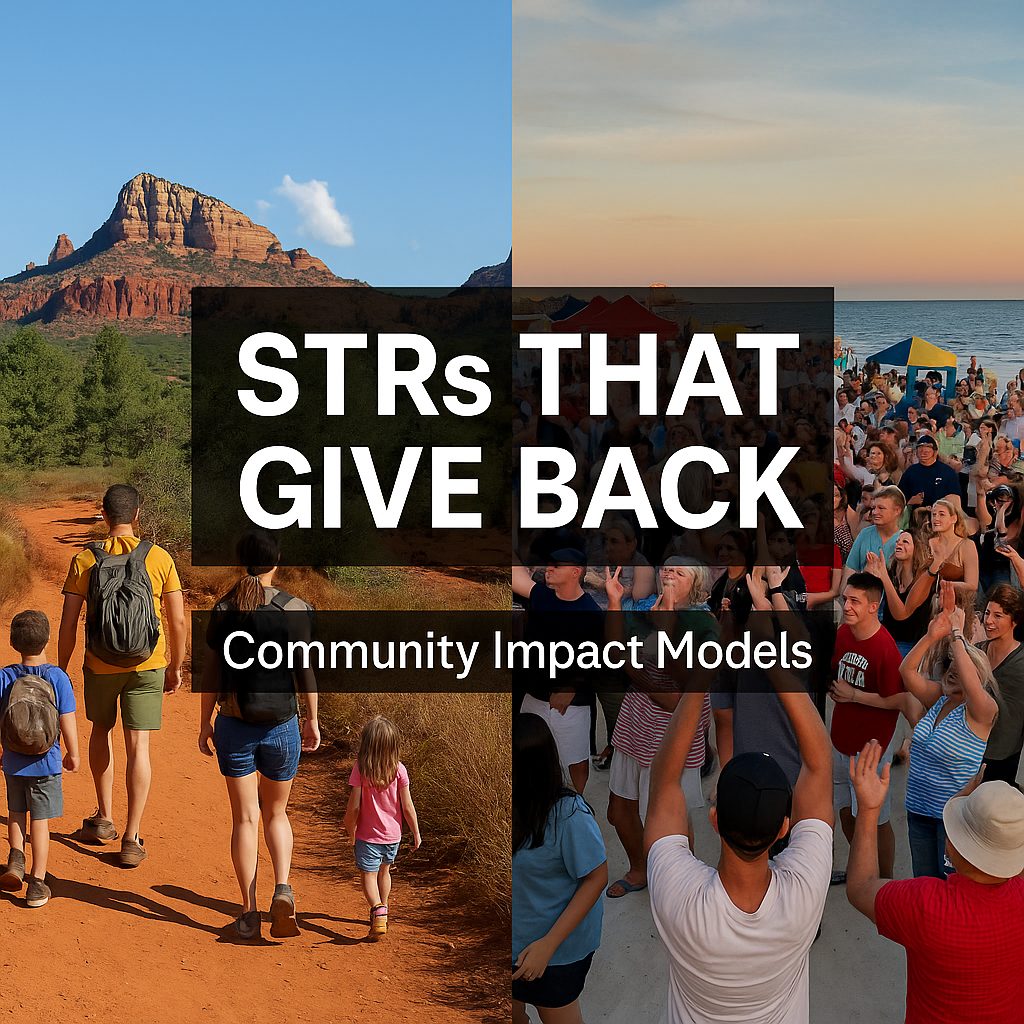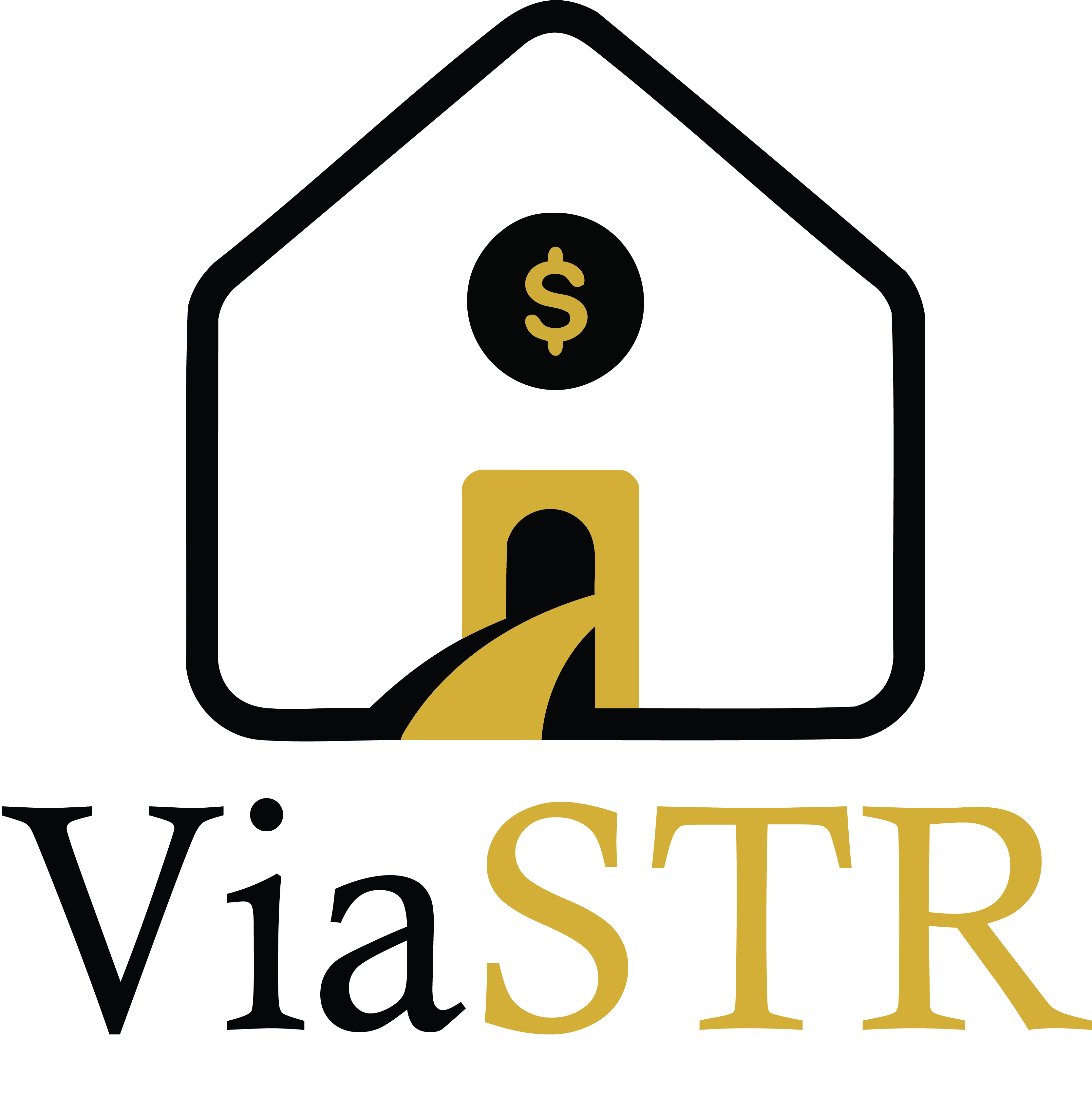Community Impact Models: STRs That Give Back

At a Glance:
- STRs are often criticized for hurting housing affordability and disrupting neighborhoods.
- Many cities have proven that STRs can fund community benefits like schools, housing, and infrastructure.
- Hosts can design local impact programs that build goodwill and strengthen regulations.
- Real examples: Sedona, Asheville, and Panama City Beach show the spectrum of success.
- We’ll share 5 actionable ways hosts can give back—most of which are tax-deductible.
This article contains affiliate links. If you click and purchase, we may earn a commission at no extra cost to you.
As an Amazon Associate I earn from qualifying purchases.
Why STR Community Impact Matters
Short-term rentals (STRs) often face pushback in city council meetings. The common narrative: STRs raise rents, create noise, and turn neighborhoods into revolving doors of strangers.
But that’s only one side of the story. When designed well, STRs can strengthen communities. Cities across the U.S. have implemented bed taxes and tourism reinvestment models that funnel STR dollars into schools, affordable housing, and local infrastructure.
“The best STR markets aren’t just profitable—they’re symbiotic. The community sees tangible benefits, not just burdens.” – TheAirbnbDataGuy
Case Study 1: Sedona, Arizona
Sedona’s breathtaking red rocks draw millions of visitors. With such high tourism, STRs were inevitable. Instead of banning them, the city uses bed tax revenue to directly support local schools and hiking trail maintenance.
- STR guests essentially help fund the very trails they hike.
- Local residents see clear, visible benefits—reducing anti-STR sentiment.
- Sedona demonstrates how earmarked taxes can turn friction into alignment.
Case Study 2: Asheville, North Carolina
Asheville faced mounting pressure over housing affordability. Instead of an outright ban, the city implemented targeted STR taxes dedicated to affordable housing initiatives.
- STR operators became contributors to housing solutions, not scapegoats.
- Residents could connect the dots: “STRs help fund more long-term housing.”
- While caps and zoning still apply, Asheville shows that policy innovation can shift perception.
Case Study 3: Panama City Beach, Florida
Known for its beaches and spring-break crowds, PCB embraced STRs as an economic engine. Tourism taxes from STRs are reinvested into:
- Beach restoration and maintenance.
- Local festivals and events that attract repeat visitors.
- Infrastructure improvements that benefit both tourists and residents.
This reinvestment model creates a virtuous cycle: STRs attract guests → taxes fund experiences → better experiences attract more guests.
Best Practices for Hosts
1. Host-Led Waste & Recycling Programs
Neighborhood friction often stems from trash. Consider piloting a Good Neighbor Waste Program:
- Align guest checkout with city trash pickup.
- Partner with local waste haulers for mid-week pickups.
- Provide labeled bins for recycling.
Small investments here can prevent the single biggest guest-neighbor conflict.
2. Community Experience Fund
Create a micro-donation model: $1 per night donated to a local nonprofit.
- A 4-bedroom STR at 70% occupancy generates ~$1,000 per year for community projects.
- Highlight this in your listing: “Each stay supports [local nonprofit].”
- Tax-deductible for hosts in many cases—check with your CPA.
3. Neighborhood Association Partnerships
Introduce yourself before the complaints start.
- Offer free stays for charity raffles or neighborhood events.
- Share your direct line with association leaders.
- Commit to noise and parking rules that exceed city standards.
4. Tourism Alignment
Bundle with local businesses—wine tours, fishing guides, bike rentals. Guests spend more locally, and businesses advocate for you at city hall.
Affiliate angle: Partners like STR Search (#ad) can help identify markets where tourism alignment is already baked in.
5. Visible Guest Guides
Create a guest manual that promotes local restaurants, nonprofits, and events.
- Add QR codes linking to city recycling schedules, trail maps, or donation drives.
- Encourage “shop local” with discount codes.
- Bonus: these upgrades count as business expenses.
Practical Host Checklist: 5 Ways to Give Back
- ✅ Donate $1 per stay to a local cause.
- ✅ Provide extra trash pickups and recycling bins.
- ✅ Partner with neighborhood associations early.
- ✅ Highlight community impact in your listing.
- ✅ Track donations/expenses for tax deductibility.
Why This Matters for Investors
For high-income W2 earners, STRs aren’t just about maximizing depreciation and cash flow. Community goodwill is a moat. In markets where regulations are tightening, the operators who can prove positive local impact will outlast those who treat STRs as pure cash machines.
As Avery Carl often says: “The best STRs aren’t just compliant—they’re welcome.”
